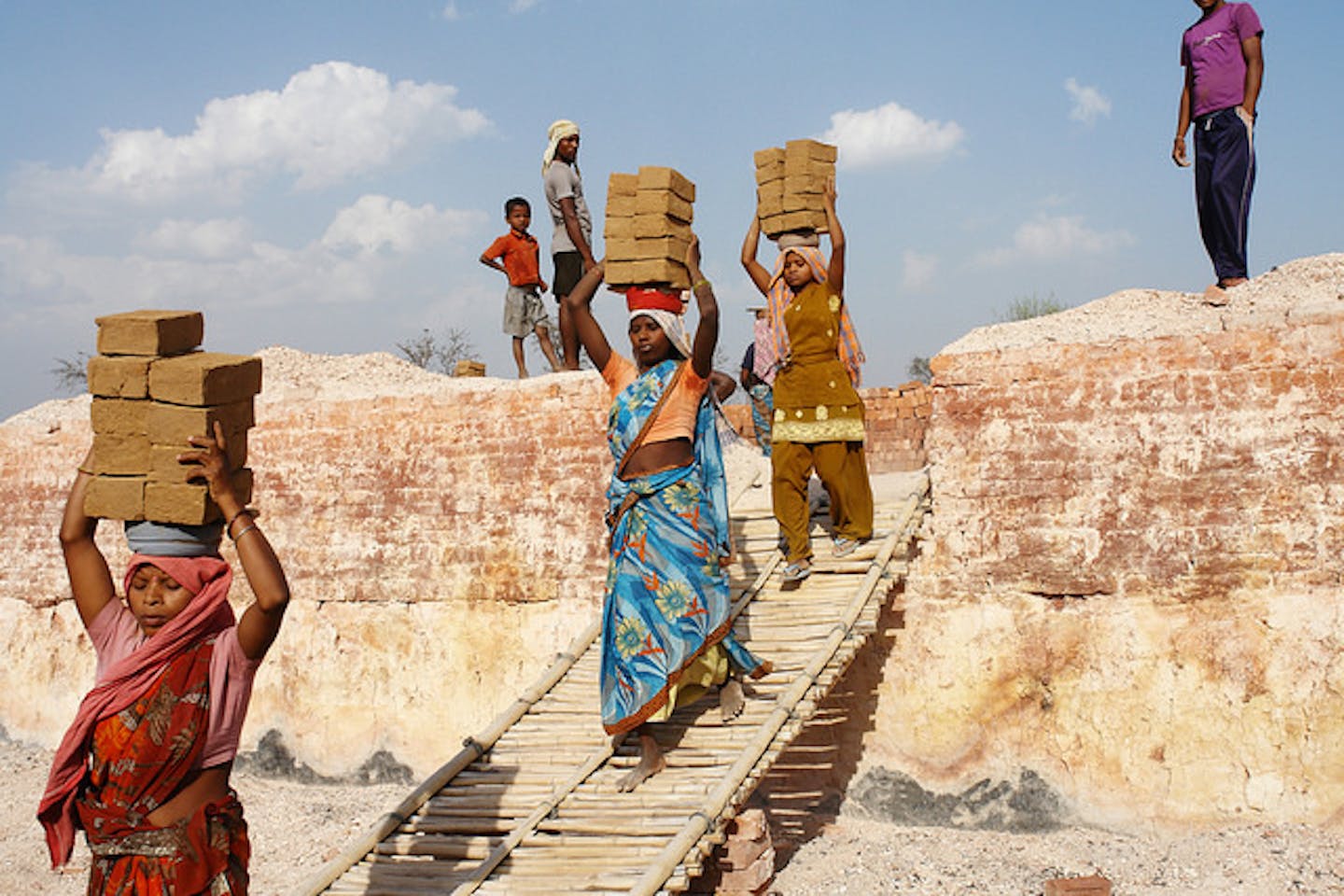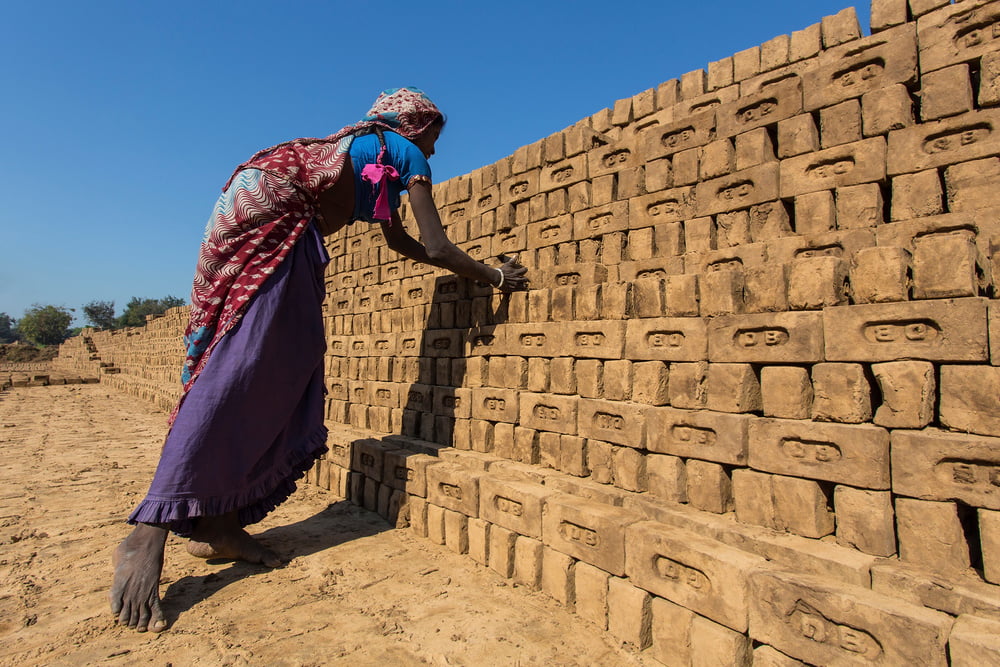As per the 2011 census, out of the total population in India, 48.58 per cent are women. 25.67 per cent of the working population constitutes women. Almost 85 per cent of the working population in India work in the unorganised sector and out of this, at least 120 million are women.
Most of the working-class population belongs to the unorganised sector, facing issues like poor working conditions, inflexible timing, wage differences, unprotected environment, etc. The brick production industry called the Brick Kilns industry is an unorganised sector, prominently restricted to rural and semi-urban areas. Indian brick kilns is one of the largest industries in the world. More than 100,000 units operate in this industry.
The majority of the workers involved in the brick industry are from marginalised caste locations, lacking education, equal social status, and security. Women particularly face discrimination and exploitation because of their sex and intersectional identities- socially excluded, economically vulnerable, and educationally deprived.
The majority of the workers hail from marginalised communities with few choices and alternatives. The plight of the labour force in the brick kilns industry is also connected with other factors like proletarianisation of labour. Women are commodified in a way that they are always in a hierarchical structure – either under the control of the owner of industry or their husbands, or by both. Further, globalisation has led to the feminisation of work. The distribution of work in brick kilns demarcates and shows sex-segregated work. The brick kiln industry also reflects how there has been a re-emergence of bondage labour due to the nature of this sector.
These kilns operate in remote areas, they are unregulated, underpaid, and not much unionisation has been undertaken in this industry. Since the brick kiln workers are mostly a ‘periodic labour force’ protective and promotive measures are not much of concern for the owners. There are other issues including, lack of proper drinking water, sanitation, hygiene, the prevalence of respiratory issues, etc

The brick kiln workers are categorised based on the nature of their work. Patheras or moulders, who organise the pits, gouge the natural soil, make doughs, sprinkle water on the earth, and shape the rounds of mud into bricks with the help of wooden moulds provided by the kiln owner. Women and children along with the patheras carry them to be spread in the sun.
Also read: Low Wages, No Rights: BJP’s Amendments Are A Disaster For Labour
The Prajapatis or bhariwalas also called kumhar are mainly loaders who carry the kutcha (the unbaked dried bricks to the kilns). Beldars or stackers arrange the bricks for firing. Rapaswales level the stacked bricks with earth and make them ready for the burning process to begin, while the Jalaiwalas fire the kiln to be properly baked and the Nikasiwalas unload and pull the baked bricks from the kilns, sort and then re-load them according to the category of bricks.
Women workers of brick kilns are merely seen as individual workers, but they are counted as family workers. There is no individual earning or wage for them. Men are seen as the main workers because of their social positioning as breadwinners, and women are seen as supplementary earners. Women act as the reserve army of labour. They do not have much say in this professional space. This, coupled with the blind adherence to gender roles in personal lives, further marginalises and disempowers women from having any say in anything at all
These kilns operate in remote areas, they are unregulated, underpaid, and not much unionisation has been undertaken in this industry. Since the brick kiln workers are mostly a ‘periodic labour force’ protective and promotive measures are not much of concern for the owners. There are other issues including, lack of proper drinking water, sanitation, hygiene, the prevalence of respiratory issues, etc.
Karl Marx had rightly warned – “When society is in a state of decline, the worker suffers most severely. The political economy does not consider him (worker) when he is not working as a human being, but leaves such consideration to criminal law, to doctors, to religion, to the statistical tables, to politics and the poor-house overseer”.
Amidst the pandemic, the labourers were the most hit and targeted community. They not only suffered due to their unstable job situation but also because of their marginalised caste and class locations. They are harassed by police authorities, governmental institutions, and forced to walk thousands of miles to reach their home without any support and facilitation.

Women workers of brick kilns are merely seen as individual workers, but they are counted as family workers. There is no individual earning or wage for them. Men are seen as the main workers because of their social positioning as breadwinners, and women are seen as supplementary earners. Women act as the reserve army of labour. They do not have much say in this professional space. This, coupled with the blind adherence to gender roles in personal lives, further marginalises and disempowers women from having any say in anything at all.
In the absence of alternative opportunities, lack of land and deprivation of education, workers, especially women in this industry are left to do jobs that are devalued, degraded and dehumanised. Dalit women are at the receiving end of the worst kind of suppression owing to their intersectional identity.
The migrant labour crisis was among the most debated amidst the pandemic. Now that spaces are opening up and everyone is adapting to the new normal, it is important for the government and policy makers to address the marginalisation of labourers, especially women in unorganised sectors like the brick kiln industry. We pride ourselves on being a welfare state, and now itis up to us to truly stick to that ideal by adequately compensating the lives and social positions of the workforce who were the most affected by the pandemic.
References
Gulati, Leela. Female Labour in the Unorganised Sector: Profile of a Brick Worker, Economic and Political Weekly (1979): 744-752
Gupta, Jayoti. Informal labour in brick kilns: need for regulation. Economic and political weekly (2003): 3282-3292
Action Research on Women’s Labour, Migration in India
(December 2017-July 2018)Singh, Dharam Pal. Women workers in the brick kiln industry in Haryana, India. Indian Journal of Gender Studies 12.1 (2005): 83-97.
Also read: Women, Work & Migration: Why Is India’s Female Labour Force Participation So Low?
Featured Image Source: Lens Culture




